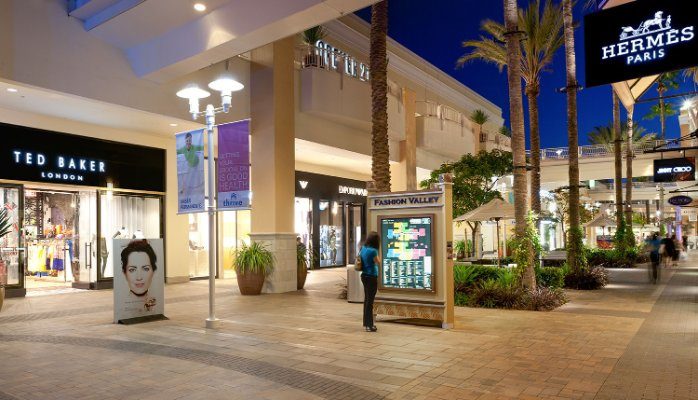Physical retail stores will still be the predominant revenue channel for U.S.-based omnichannel retailers and critical to their brand identities in 2020, according the Retail Real Estate Beat, a survey conducted by FTI Consulting. Even though retail survey respondents expect their e-Commerce revenue share to increase by 50% over the next three years, from 16% to 24%, they still anticipate that physical stores will be responsible for 76% of revenue at that time.
The survey, conducted in Q2 2017, explored the perceptions of mall and shopping center landlords and their retailer tenants about the role of brick–and–mortar stores over the next three years, as well as retailers’ top business concerns within that time span.
Retailers are significantly more concerned than landlords about the impact of competitive pricing and promotional pressures: 63% of retailers identified this as a business/technology trend that would have the greatest impact on them over the next three years, compared to only 17% of landlords. In contrast, 80% of landlords predicted the continued shift away from physical stores would be their tenants’ most pressing business concern; for retailers, this issue ranked second at 54%.
Other key findings from the survey included:
-
Retailers anticipate that the growth of mobile commerce will outpace desktop e-Commerce, although desktop will remain the preferred digital shopping channel by 2020. Respondents indicated that today’s desktop-to-mobile ratio of 10% to 6% will narrow to 13% to 11% by 2020.
-
To meet new customer demands, retailers plan to make “substantial” or “transformative” changes to inventory management (74%), store upgrades/refreshes (69%), return policies (67%), shipping options (64%) and store staffing levels (53%).
-
More than three quarters (76%) of retailers agreed or strongly agreed that physical locations are critical to their brands’ identity today, while a higher percentage of landlords (87%) expected their tenants to select that statement.
-
While 73% of retailers agreed or strongly agreed that their shoppers require a more personalized in-store experience, only 33% of landlords thought their tenants would concur.
-
A not-surprising 93% of landlords indicated new physical stores would be critical to retailers’ revenue growth, in comparison to a much smaller majority (61%) of retailers.
“Perhaps the most important finding to come out of the [study] is the mandate for landlords and their retail tenants to develop a better understanding of each other’s needs and how the evolving nature of retail will affect both sides of the equation,” said Cynthia Nelson, Senior Managing Director in the Real Estate & Infrastructure industry group at FTI Consulting in a statement. “Mall owners and their retail tenants can purposefully focus on ways to work together to more effectively compete with the existential threat posed by retail game-changers like Amazon and Walmart and thrive for years to come.”
More than one-third (36%) of respondents operate 501 or more locations, 23% operate 251-500 units, 30% operate 50-250 stores, and 11% operate fewer than 50 outlets. On the commercial real estate side, respondents included 30 of the largest U.S.-based REITs and shopping center and mall landlords. Final data analysis was prepared by Oxford Economics.
Physical retail stores will still be the predominant revenue channel for U.S.-based omnichannel retailers and critical to their brand identities in 2020, according the Retail Real Estate Beat, a survey conducted by FTI Consulting. Even though retail survey respondents expect their e-Commerce revenue share to increase by 50% over the next three years, from 16% to 24%, they still anticipate that physical stores will be responsible for 76% of revenue at that time. The survey, conducted in Q2 2017, explored the perceptions of mall and shopping center landlords and their retailer tenants about the role of brick-and-mortar stores over the next three years, as well as retailers’ top business concerns within that time span. Retailers are significantly more concerned than landlords about the impact of competitive pricing and promotional pressures: 63% of retailers identified this as a business/technology trend that would have the greatest impact on them over the next three years, compared to only 17% of landlords. In contrast, 80% of landlords predicted the continued shift away from physical stores would be their tenants’ most pressing business concern; for retailers, this issue ranked second at 54%. Other key findings from the survey included: • Retailers anticipate that the growth of mobile commerce will outpace desktop e-Commerce, although desktop will remain the preferred digital shopping channel by 2020. Respondents indicated that today’s desktop-to-mobile ratio of 10% to 6% will narrow to 13% to 11% by 2020. • To meet new customer demands, retailers plan to make “substantial” or “transformative” changes to inventory management (74%), store upgrades/refreshes (69%), return policies (67%), shipping options (64%) and store staffing levels (53%). • More than three quarters (76%) of retailers agreed or strongly agreed that physical locations are critical to their brands’ identity today, while a higher percentage of landlords (87%) expected their tenants to select that statement. • While 73% of retailers agreed or strongly agreed that their shoppers require a more personalized in-store experience, only 33% of landlords thought their tenants would concur. • A not-surprising 93% of landlords indicated new physical stores would be critical to retailers’ revenue growth, in comparison to a much smaller majority (61%) of retailers. “Perhaps the most important finding to come out of the [study] is the mandate for landlords and their retail tenants to develop a better understanding of each other’s needs and how the evolving nature of retail will affect both sides of the equation,” said Cynthia Nelson, Senior Managing Director in the Real Estate & Infrastructure industry group at FTI Consulting in a statement. “Mall owners and their retail tenants can purposefully focus on ways to work together to more effectively compete with the existential threat posed by retail game-changers like Amazon and Walmart and thrive for years to come.” More than one-third (36%) of respondents operate 501 or more locations, 23% operate 251-500 units, 30% operate 50-250 stores, and 11% operate fewer than 50 outlets. On the commercial real estate side, respondents included 30 of the largest U.S.-based REITs and shopping center and mall landlords. Final data analysis was prepared by Oxford Economics.













